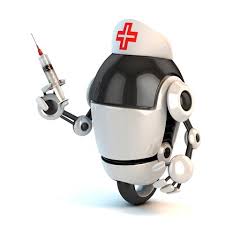
Breaking News
 2 Hours of Retro Sci-Fi Christmas Songs | Atomic-Age Christmas at a Snowy Ski Resort
2 Hours of Retro Sci-Fi Christmas Songs | Atomic-Age Christmas at a Snowy Ski Resort
 Alternative Ways to Buy Farmland
Alternative Ways to Buy Farmland
 LED lights are DEVASTATING our bodies, here's why | Redacted w Clayton Morris
LED lights are DEVASTATING our bodies, here's why | Redacted w Clayton Morris
Top Tech News
 Travel gadget promises to dry and iron your clothes – totally hands-free
Travel gadget promises to dry and iron your clothes – totally hands-free
 Perfect Aircrete, Kitchen Ingredients.
Perfect Aircrete, Kitchen Ingredients.
 Futuristic pixel-raising display lets you feel what's onscreen
Futuristic pixel-raising display lets you feel what's onscreen
 Cutting-Edge Facility Generates Pure Water and Hydrogen Fuel from Seawater for Mere Pennies
Cutting-Edge Facility Generates Pure Water and Hydrogen Fuel from Seawater for Mere Pennies
 This tiny dev board is packed with features for ambitious makers
This tiny dev board is packed with features for ambitious makers
 Scientists Discover Gel to Regrow Tooth Enamel
Scientists Discover Gel to Regrow Tooth Enamel
 Vitamin C and Dandelion Root Killing Cancer Cells -- as Former CDC Director Calls for COVID-19...
Vitamin C and Dandelion Root Killing Cancer Cells -- as Former CDC Director Calls for COVID-19...
 Galactic Brain: US firm plans space-based data centers, power grid to challenge China
Galactic Brain: US firm plans space-based data centers, power grid to challenge China
 A microbial cleanup for glyphosate just earned a patent. Here's why that matters
A microbial cleanup for glyphosate just earned a patent. Here's why that matters
 Japan Breaks Internet Speed Record with 5 Million Times Faster Data Transfer
Japan Breaks Internet Speed Record with 5 Million Times Faster Data Transfer
Robots are coming to a hospital near you

Medical robots are helping doctors and other professionals save time, lower costs and shorten patient recovery times, but patients may not be ready. Our research into human perceptions of automated healthcare finds that people are wary of getting their healthcare from an automated system but that they can adjust to the idea—especially if it saves them money.
Hospitals and medical practices are already using a fair amount of automation. For instance, in one San Francisco hospital and other places, delivery robots–about the size of a mini-fridge–zip through the hallways delivering pills, bringing lunch to patients, and ferrying specimens and medical equipment to different labs. Some hospitals are set up for delivery robots to open remote-control doors and even use elevators to get around the building.
Robots can also assist with more complex tasks, like surgery. Their participation can range from simply helping stabilize a surgeon's toolsall the way to autonomously performing the entire procedure. Perhaps the most famous robotic surgery system lets a surgeon operate full-size, ergonomically friendly equipment as a remote control to direct extremely tiny instruments what to do inside a patient's body, often through extremely small incisions.

 $100 SILVER CONFIRMED?
$100 SILVER CONFIRMED?

